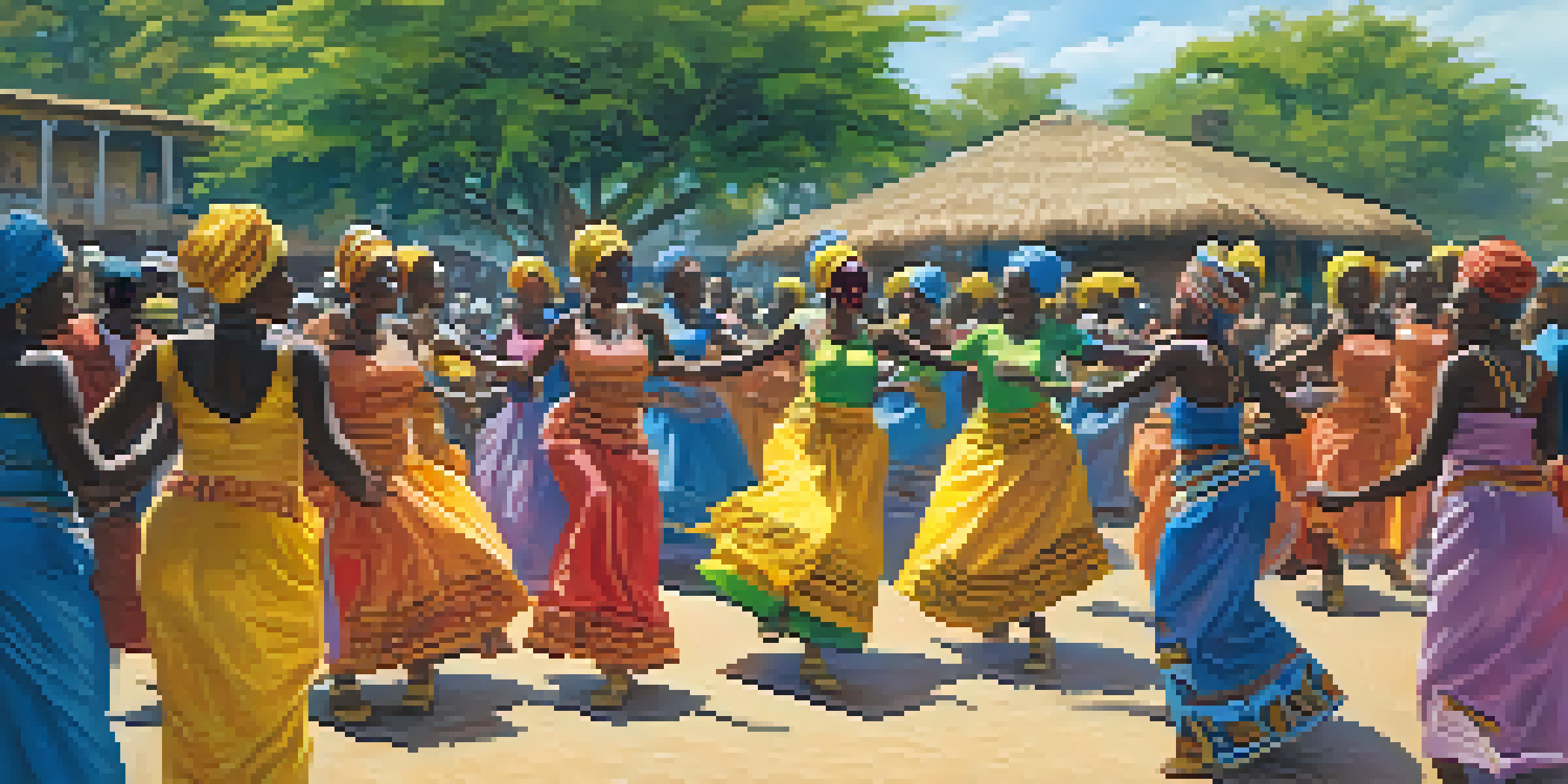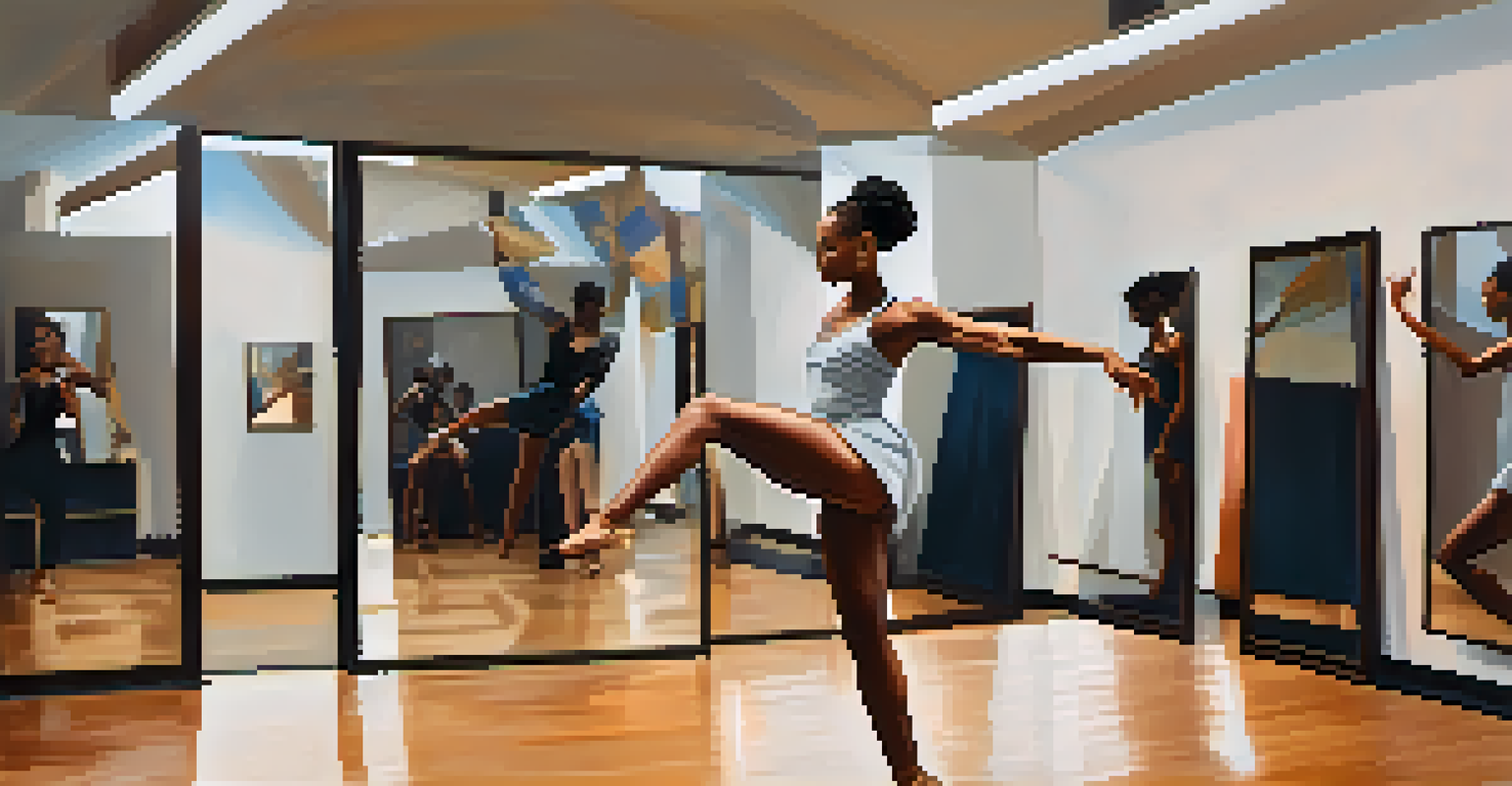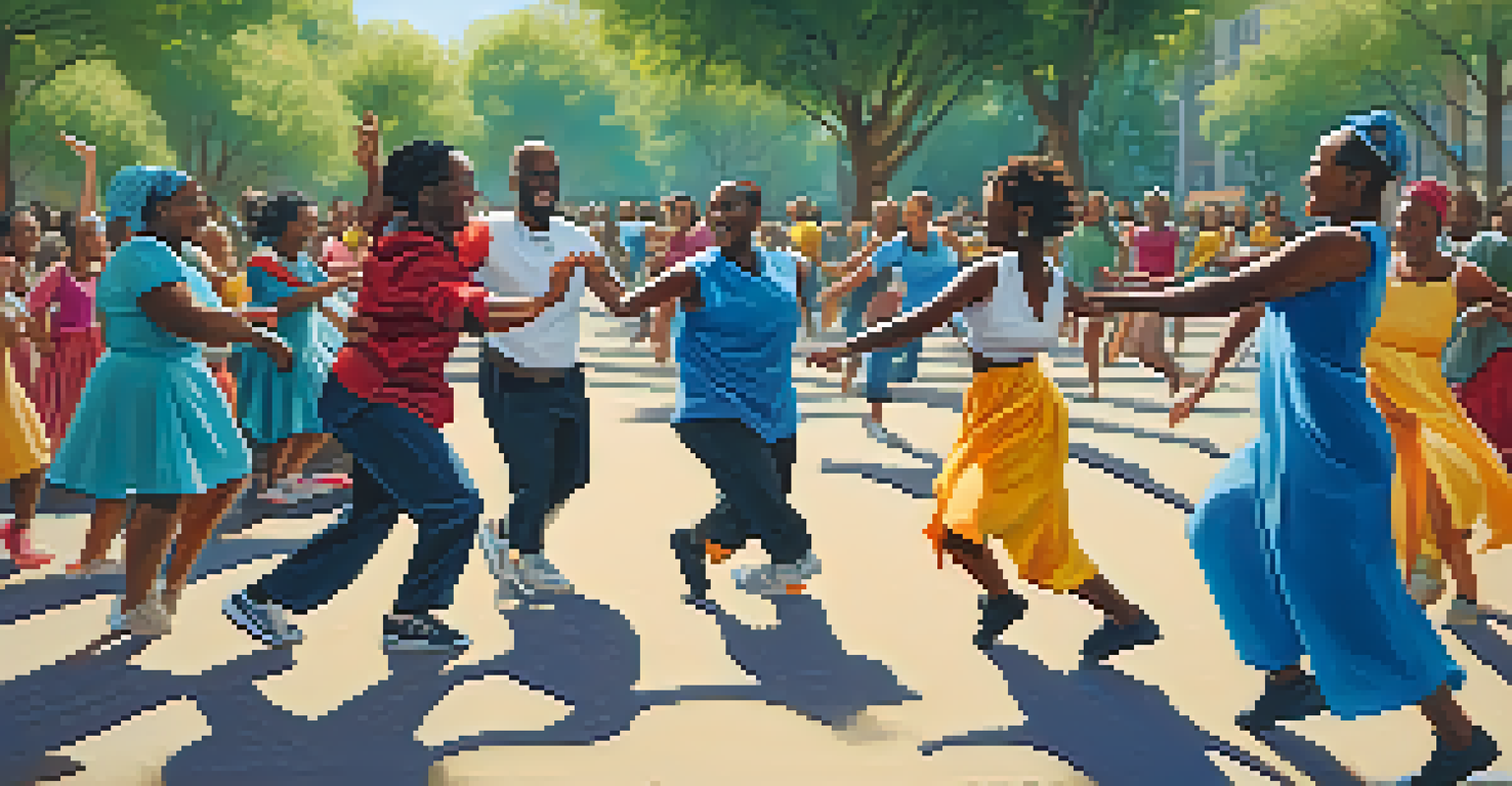The Influence of African Dance on Contemporary Movement Styles

Understanding the Roots of African Dance Traditions
African dance is deeply intertwined with cultural identity, history, and community. It serves as a powerful means of storytelling and expression, reflecting the diverse traditions across the continent. From ceremonial dances to social gatherings, these movements are often rooted in spirituality and rituals, making them a vital part of African heritage.
Dance is the hidden language of the soul.
Each region in Africa boasts unique dance styles that convey different emotions and narratives. For example, the energetic movements of West African dance celebrate life and the harvest, while the graceful gestures of East African dance often depict nature and the surrounding environment. This rich variety showcases how dance mirrors the values and beliefs of various communities.
As contemporary artists explore these traditions, they infuse their work with elements that resonate on a global scale. By understanding the cultural significance behind these dances, choreographers can create pieces that not only pay homage to African roots but also appeal to modern audiences seeking authentic and meaningful experiences.
Key Characteristics of African Dance Styles
African dance is characterized by its rhythmic complexity and diverse movement vocabulary. Dancers often incorporate the use of body isolations, polyrhythmic patterns, and grounded footwork, which can be exhilarating to watch. These elements create a dynamic energy that captivates both performers and spectators alike.

Moreover, African dance places a significant emphasis on community participation. Unlike many Western dance forms that focus on individual performance, these dances often involve group interactions, fostering a sense of unity and collective expression. This communal aspect can be seen in traditional dances like the Adamu Orisha Play from Nigeria, where dancers engage with the audience.
Cultural Significance of African Dance
African dance serves as a vital means of storytelling and community expression, deeply rooted in cultural identity and traditions.
The physicality of African dance also contributes to its influence on contemporary styles. Dancers’ bodies become instruments of expression, conveying emotions and stories through every move. This emphasis on bodily expression has inspired modern choreographers to adopt similar approaches, integrating African techniques into their own works.
The Cross-Pollination of Styles in Dance History
Throughout history, dance has always been a melting pot of influences. The African diaspora, particularly during the transatlantic slave trade, brought these vibrant movements to the Americas, where they blended with various cultural elements. This fusion gave rise to new styles like jazz, hip-hop, and samba, all of which carry traces of African dance.
The dance is a poem of which each movement is a word.
For instance, the African influence on jazz can be seen in the incorporation of improvisation and syncopated rhythms. Similarly, hip-hop dance styles often reflect African dance's energetic footwork and expressive body language. This cross-pollination illustrates how dance evolves and adapts, creating new forms that resonate with different audiences.
As contemporary dancers and choreographers continue to explore and reinterpret these styles, they pay homage to the rich history while also making it relevant to today's world. This ongoing dialogue between past and present ensures that African dance remains a vital source of inspiration for modern movement.
Contemporary Choreographers Inspired by African Dance
Many contemporary choreographers have drawn inspiration from African dance to enrich their creative practices. Renowned artists like Alvin Ailey and Judith Jamison have incorporated African rhythms and movements into their choreography, creating works that celebrate cultural heritage. Their performances often showcase the beauty and strength found in African dance traditions.
Additionally, choreographers such as Akram Khan and Germaine Acogny have seamlessly blended African dance with contemporary techniques, fostering a unique dialogue between the two. Their innovative approaches highlight how African dance can inform modern storytelling, allowing audiences to connect with themes of identity, migration, and resilience.
Impact on Contemporary Choreography
Many modern choreographers draw inspiration from African dance, blending its rhythms and movements with contemporary styles to create innovative works.
This cross-cultural exploration not only elevates the visibility of African dance but also opens doors for new interpretations, inviting performers and audiences to engage in a shared experience. As these choreographers continue to push boundaries, they showcase how the influence of African dance is far-reaching and ever-evolving.
The Role of Dance in Social Movements
Dance has historically played a significant role in social movements, and African dance is no exception. Many African dances serve as a form of protest, a way to voice dissent, and a means of galvanizing communities. These dances often carry messages of resistance, empowerment, and solidarity, making them powerful tools for social change.
In contemporary contexts, dance remains a vital part of activism. Movements such as Black Lives Matter have utilized dance as a form of expression, bringing communities together to advocate for justice and equality. By incorporating African dance styles into these demonstrations, participants honor their heritage while addressing pressing social issues.
Moreover, this integration of dance into activism creates a sense of unity and collective strength. It reminds us that movement can transcend words, allowing individuals to share their stories and experiences through the language of dance. The ongoing relevance of African dance in social movements underscores its ability to connect people and inspire action.
Educational Initiatives Promoting African Dance
As the influence of African dance spreads, educational initiatives have emerged to promote its teachings. Dance schools and community programs are increasingly incorporating African dance styles into their curricula, offering students a chance to explore these rich traditions. This exposure not only enhances their dance skills but also deepens their understanding of cultural history.
Workshops and masterclasses led by accomplished African dancers provide invaluable learning experiences. These sessions often emphasize the importance of technique, rhythm, and cultural context, allowing participants to appreciate the nuances of African dance. Such initiatives foster a sense of respect for the art form and its origins.
Dance as a Tool for Social Change
African dance plays a significant role in social movements, serving as a powerful form of protest and a means of fostering community solidarity.
Additionally, integrating African dance into education promotes inclusivity and diversity within the dance community. It encourages dancers from various backgrounds to engage with different styles, enriching their overall artistic expression. By embracing African dance, educational programs play a crucial role in preserving these traditions for future generations.
Looking Ahead: The Future of African Dance in Modern Styles
The future of African dance in contemporary movement styles looks promising as artists continue to explore its depths. With the rise of globalization and digital platforms, there's a greater opportunity to share these vibrant traditions with a wider audience. This exposure can lead to a renewed appreciation for the cultural significance of African dance.
Moreover, as more choreographers experiment with blending African dance with other styles, we can expect to see innovative works that challenge conventional boundaries. This creative exploration allows for fresh narratives and perspectives, making dance a dynamic form of communication in today's world.

Ultimately, the influence of African dance on contemporary movement styles is an ever-evolving journey. By honoring its roots while embracing innovation, artists can create dialogue and connection, ensuring that the spirit of African dance continues to thrive and inspire generations to come.